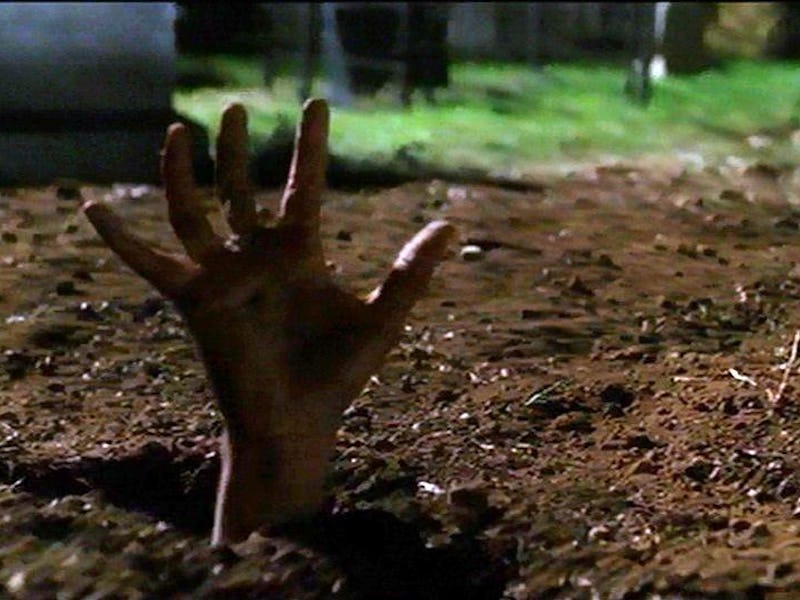How Do You Die When You’re Buried Alive?
Oxygen is your friend. Pressure is not.

At ‘Inverse’, we believe there are no stupid questions, but there are weird questions. What better time to answer them than Halloween?
Beatrix Kiddo emerged with just a few bloody knuckles after punching her way out of her own grave in Kill Bill 2. That degree of strength and perseverance, though useful six feet under, unfortunately exists solely in the realm of vengeful Tarantino heroines. The run-of-the-mill vivisepulture victim dies, but the process of slipping the mortal coil isn’t as bad as you might think.
Imagining how a person succumbs to death when they’re buried alive has provided fodder for depraved imaginations throughout the centuries. Poe, the OG sicko, wrote The Premature Burial during the height of the 19th-century cholera epidemic, which birthed a general phobia of being buried alive. In response, “safety coffins,” equipped with little bells for the mistakenly buried to alert the living, rose in popularity. While gravedigger error has been greatly reduced since then, our taphephobia has not, thanks in part to our morbid fascination with how premature burial actually kills us. In the spirit of Halloween, Inverse dug into three live burial scenarios.
Buried in a Coffin
In the classic buried alive scenario, asphyxiation is most likely to be the cause of death. The trick to slowing down the suffocation process is taking slow and shallow breaths, but that won’t be easy once you start to panic. Conserving the air you haven’t displaced with your body is key. On average, a person’s volume is 66 L, and the average casket holds 886 L: The leftover 820 L of air, 164 L of which is oxygen, is yours to ration.
If, despite being pretty stressed out, the grounded party manages to breathe like an average resting adult, their body will convert oxygen at a rate of about 550 L per day day, or 23 L an hour. That means someone in a coffin has seven hours to make a move.
Of course, the next move is likely no move at all, because there really isn’t any escape. As carbon dioxide replaces the last sips of life-bringing oxygen, blackout and coma ensue. The heart stop beatings not too long after.
Just Plain Buried
Maybe your murderers are in a rush. Or maybe they’re just cheap. Tossing a body into a grave without a coffin still counts as being buried alive. Assuming you’re in a pit meant for a funeral — six feet deep and coffin-sized — you’ll be buried with about 2,775 L of soil on top of you — a sweet 3697 lbs of dirt.
Unless all of the soil is replaced at once, the victim is unlikely to break any bones as the grave is refilled. What will happen is that the weight of the dirt will slowly constrict the chest, making it harder to breathe. As things start to go fuzzy — oxygen is in short supply — the mouth and nostrils will fill with soil, making breathing the air available between particulates impossible.
Avalanche
Because hypothermia is a serious issue, few avalanche victims survive past 25 minutes.
Brain damage sets in about 10 minutes after snow encompasses the body so thinking clearly in an avalanche situation is nigh impossible — and that doesn’t even matter much because as extremities freeze they become unresponsive. Avalanche beacons and teamwork really are the only way out. It’s only a matter of minutes until consciousness slips away. Brain activity soon follows.